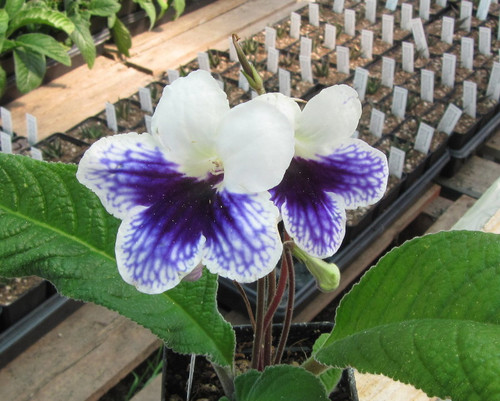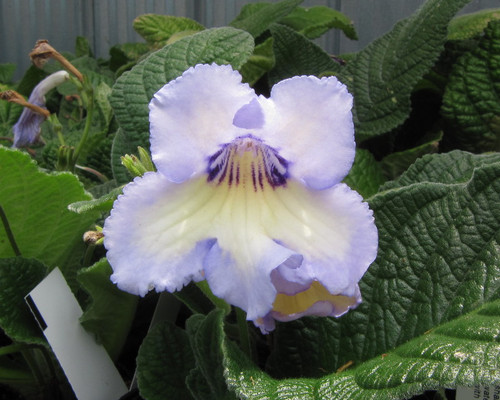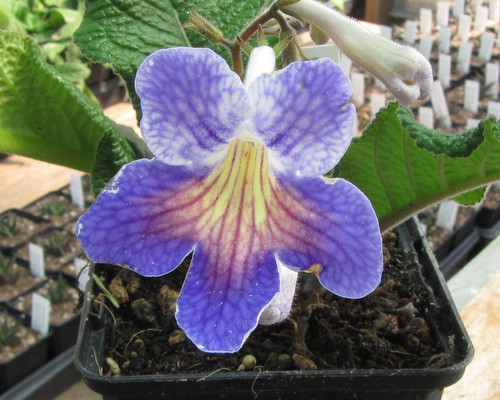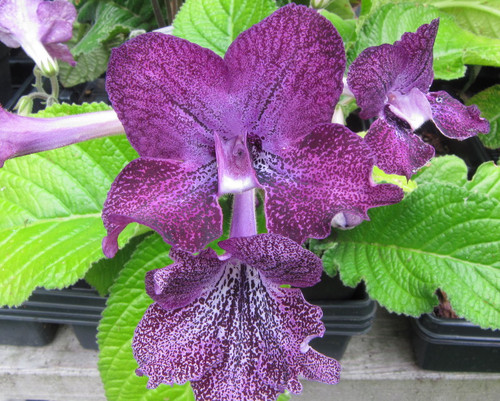Pot Size: 3.5"
Accepted Scientific Name: Streptocarpus hybrid 'Leyla'
Origin and Habitat:
Streptocarpus hybrids are derived mainly from species native to South Africa and Madagascar. In their natural environments, they grow in sheltered, partially shaded habitats along forest edges, rock faces, and moist valleys. These regions are characterized by mild temperatures, high humidity, and excellent air circulation. The hybrids have been developed through selective breeding to enhance ornamental qualities such as flower color, size, and longevity, while maintaining adaptability to indoor culture. 'Leyla' is one such hybrid, celebrated for its bold floral display and reliable performance in containers.
Description:
Streptocarpus hybrid 'Leyla' is a compact, free-flowering perennial that grows 8 to 12 inches tall and 10 to 14 inches wide. The plant forms a low rosette of oblong, textured green leaves, which serve as a lush backdrop for its blooms. The flowers are trumpet-shaped with flared lobes, typically deep violet to purple in color, often accented with lighter markings or shading that enhances their depth and vibrancy. Abundant clusters of flowers appear on slender stems, providing a striking, long-lasting display throughout the growing season.
Cultivation:
Zone: Grown indoors in most regions, outdoors in USDA Zones 10–11.
Temperature: Ideal range is 15–25°C. Protect from temperatures above 30°C or below 10°C.
Growth Rate: Moderate, with steady foliage growth and continuous flowering under good conditions.
Soil: Use a well-draining, airy mix with pumice to prevent compaction and root rot.
Watering: Keep evenly moist but not waterlogged. Allow the soil surface to dry slightly between waterings.
Fertilizing: Feed with a balanced liquid fertilizer every 2–3 weeks during growth and flowering.
Light: Prefers bright, indirect light. Avoid direct sun to prevent scorching and poor bloom production.
Pests and Diseases: May be affected by aphids, spider mites, mealybugs, or thrips. Overwatering increases risk of root rot and fungal diseases. Ensure good airflow to minimize problems.
Propagation:
Propagate by leaf cuttings or division. Leaf sections placed in a moist, well-draining medium will produce new plantlets, while mature clumps may be divided for quicker results.







